Fouling-Release Properties

In addition to non-leaching, contact-active antifouling coatings, considerable effort has been dedicated to the development of fouling-release technologies. Fouling-release coatings function by minimizing the strength of adhesion of the adhesives or “biological glues” produced by the various fouling organisms. Current fouling-release technologies are based on silicone elastomers or fluoropolymers. Researchers at NDSU are focusing on new strategies to improve their performance and durability while extending the active lifetime of these coating systems. As with the antifouling coatings, a number of high-throughput screening assays have been developed at NDSU to rapidly evaluate the adhesion strength of several relevant marine fouling organisms.
Bacterial Biofilm Adhesion
Two primary screening assays are utilized to rapidly determine the adhesion strength of marine bacterial biofilms to coating cast in multi-well plates.
Biofilm Retention and Retraction
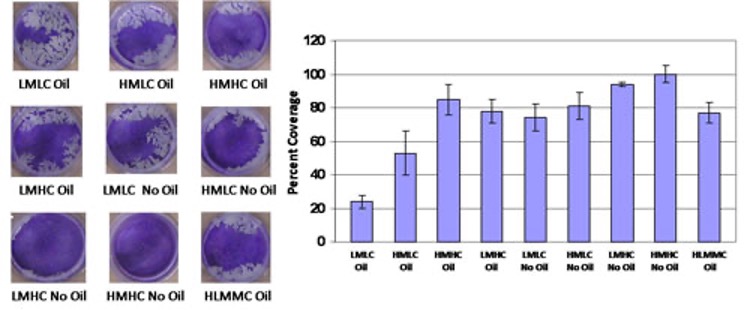
A bacterial biofilm retraction assay was developed to obtain a first approximation of fouling-release performance of experimental coatings. The assessment technique relies on the measurement of percent surface coverage from plate images captured after crystal violet staining as means to compare coating performance. The difference in percent surface coverage among fouling-release coating candidates is attributed to a “biofilm retraction” phenomenon that can occur as the coating surfaces dry after rinsing. The biofilm retraction process is theorized to be a consequence of removal and redistribution of adherent biofilms by the de-wetting of water droplets on the hydrophobic coating surfaces. In this regard, coatings that promote a weak biofilm adhesion exhibit a high degree of biofilm retraction (i.e., low surface coverage) while coatings that facilitate strong biofilm adhesion would show little or no biofilm retraction (i.e., high surface coverage) on the coating surface.
Water-Jet Adhesion
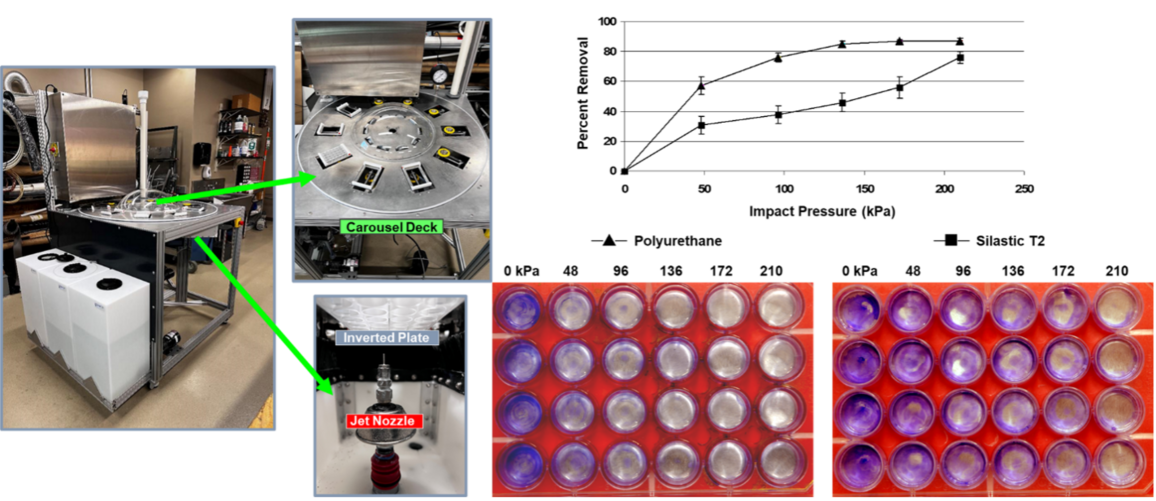
An additional screening assay for biofilm adhesion was adapted from a water-jet methodology commonly used at ocean immersion testing sites to evaluate the adhesion strength of various fouling organisms in the field. An automated and miniaturized version of the water–jet apparatus used in the field was built in-house at NDSU. The system consists of a 10-positon carousel that rotates a series of well plate carriers into proper position for water jet treatments. Well plate carriers are inverted by an actuated ‘flipping’ mechanism over a mobile, spinning nozzle that exposes the coated well bottoms to a pressurized stream of water perpendicular to the coating surface. The duration and pressure of the water-jet are precisely controlled through a customized software program. Coatings prepared in 24-well plates are subjected to water-jet treatments after bacterial incubation to facilitate removal of adherent biofilms. The difference in biomass, before and after water jetting treatments, is determined using the same crystal violet quantification assay used in the characterization of antifouling coatings. Experiments with Halomonas pacifica (right) demonstrated the difference in fouling-release performance observed between a silicone elastomer (Silastic T2) and polyurethane coating, with respect to biofilm adhesion.
Microalgal Adhesion
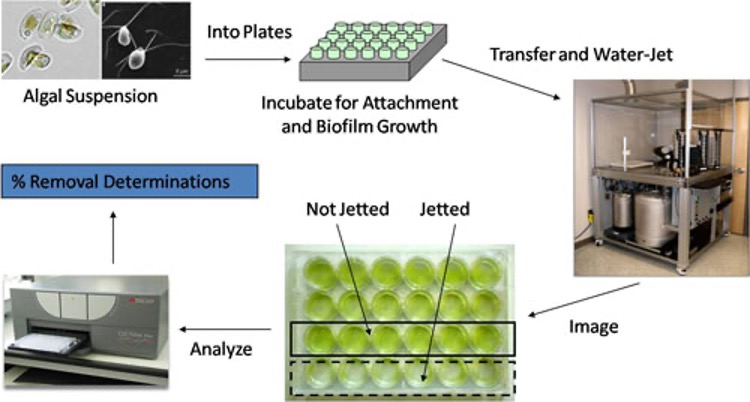
The adhesion strength of microalgae attached to experimental coatings prepared in multi-well plates is determined with the same water-jet apparatus utilized for the rapid assessment of bacterial biofilm adhesion. However, as with the quantification of antifouling performance, a DMSO extraction and fluorescence measurement of chlorophyll is utilized to determine the biomass before and after water-jet treatments. Two species of microalgae are utilized to evaluate fouling-release performance: the brown microalgae diatom species, Navicula incerta, and the green microalgae isolate, Nannochloropsis oculata.
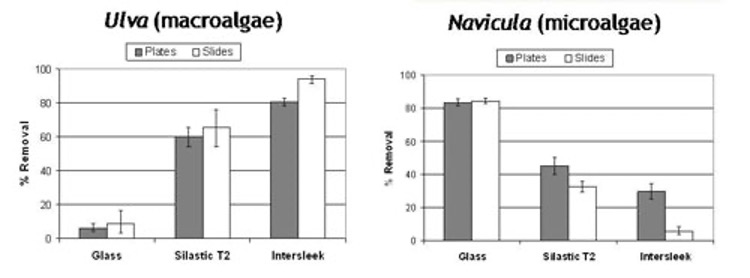
Barnacle Attachment and Adhesion
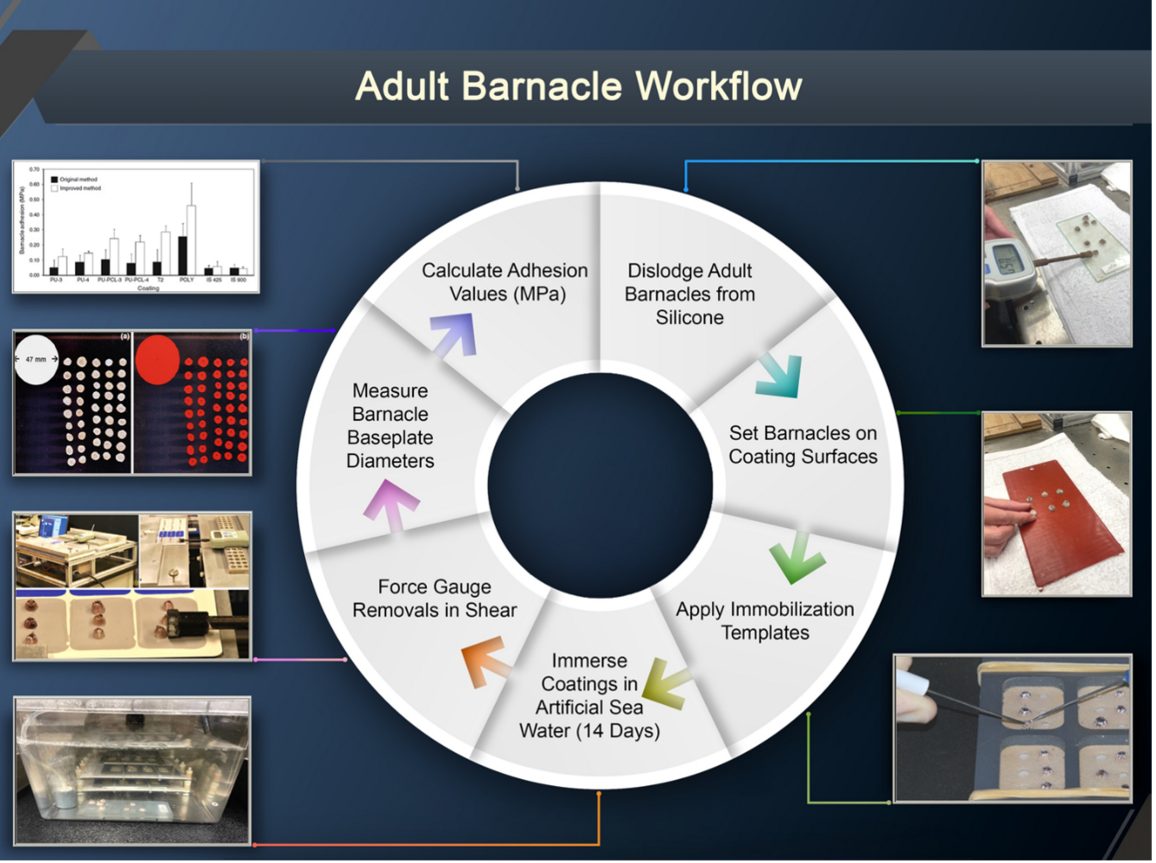
An adult barnacle reattachment and adhesion assay was developed in collaboration with researchers at the Duke University Marine Laboratory in Beaufort, NC. Adult barnacles are provided to NDSU on glass panels coated with a silicone elastomer and maintained year-round in an automated aquarium rack system. Adult barnacles are pushed off the silicone elastomer and immobilized on experimental coatings prepared on panels or glass microscope slides (right picture above). The coatings with immobilized barnacles are then immersed in the aquarium system for two weeks to facilitate reattachment and subsequently removed for force gauge measurements and calculation of adhesion strengths. The barnacle reattachment assay provides valuable information regarding the ease of removal of shell fouling from fouling-release coatings and serves as a complement to the bacterial and algal adhesion screening assays.


